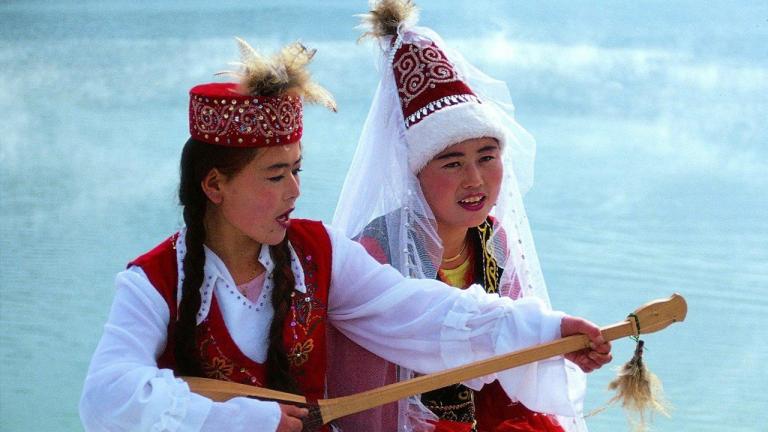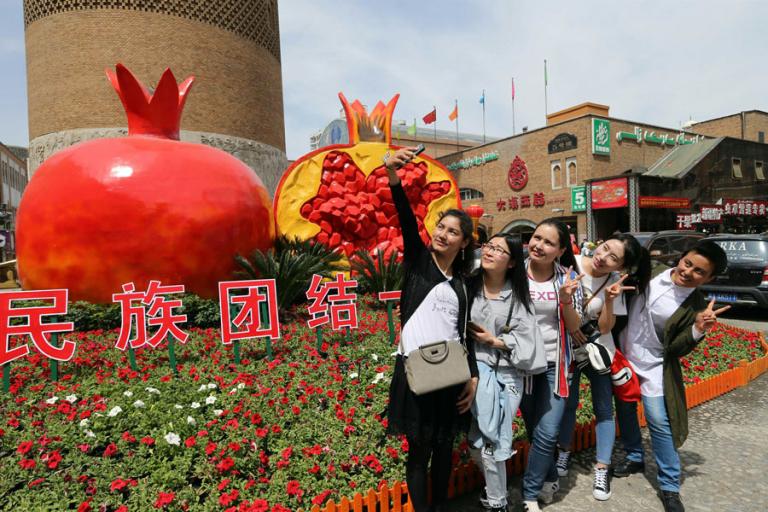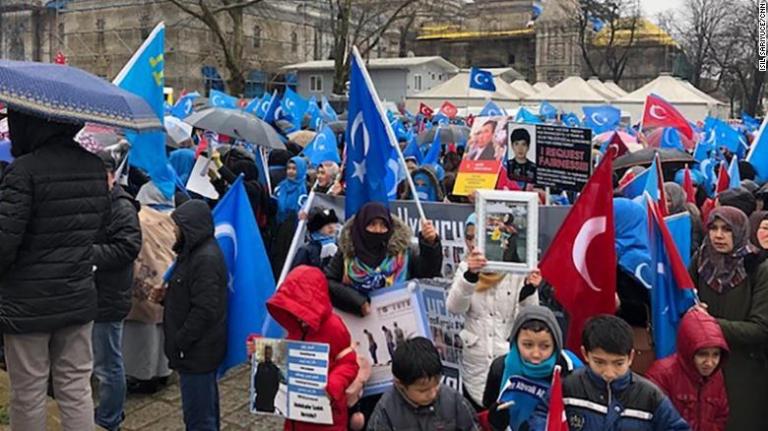Xinjiang Uygur
4 min readThe word”Uygur”in Chinese means “unity,”a very apt description of the Uygur people’s history.Their ancestors were nomadic tribes in China’s northwest and central Asia. Today, the Uygur peoplelive in the oasis south of the Tianshan Mountains in the Xinjiang Uygur Autonomous Region, with a population about 8.39 million.

This ethnic minority from the western regions and central Asia has all the features of a nomadic people. They are happy and excel at singing and dancing. As soon as music from Dombera,a Uygur musical instrument, rises, men and women, old and young, will form a circle to dance. Their famous musical epic called”The Twelve Mugams”(meaning 12 big tunes), have a prelude, storytelling, music and dancing parts. It takes a whole day to present it from beginning to end, exhibiting the essence of Uygur music and dancing arts. At the sad tunes from Satar,a special music instrument for this epic, and the heart-breaking singing in a hoarse voice from Muqam artists, and the elegant dancing movesin”imitation”and”competition”parts, no one fails to feel the desolate depths of a desert. The Uygur people describe the “Twelve Muqams”as magic wine or an enchanting picture. Listening to it, aged people become invigorated and sick people on their deathbeds feel at peace, knowing for certain that they will rise to heaven after death. Without the epic, weddings lose their excitement and the desert is simply a lifeless place.
Besides music, the Uygur people have majestic clothing. Men wear a long robe called qia pan,a knee-length robe that has long sleeves but no collars or buttons. The ribbon belt they wear is wide and long, capable of holding snacks and personal items.A ribbon belt is usually casual except for holidays or celebrations, during which time it will be replaced with embroidered ribbons in bright colors. The men’s shirt is short, closed in front, and often in white, black or dark colors. Young people’s shirt has flowery lace. In summer, they wear white and thin qia pan, while in winter, they wear cotton-padded ones in dark colors. The Uygur women prefer dresses in bright colors with loose sleeves. The best material is a special silk called Aidelis, described as the most beautiful thing in a desert next only to blooming flowers. This silk has a history of 2,000 years, all made and dyed by hand from cocoons, requiring much time and effort to produce.

All the Uygur people, men and women, old and young, wear exquisitely made flowery hats called duo pa, an important symbol to distinguish them from other nationalities. At a religious ceremony, no one leaves his or her head bare. Having no headwear outdoors is viewed as blasphemous to the heavens. Flowery hats decorated with embroidery, pearls, gold or silver are popular in their life and also make beautiful gifts for friends and relatives.
Uygur foods are well-known. Almost everyone is familiar with their famous meter-long mutton shish kebab. Try it and you won’t forget its delicious taste. Its skewer can be 80 centimeters long, with big chunks of mutton meat on a dozen skewers baking in an earthen pit at one time. They are crispy, tender, delicious and fragrant. The whole roast lamb-golden, shiny and crispy outside but very tender nside-is served to honored guests.
Their three meals take wheat flour as the staple food. Nang, hand-picking rice and baked dumpling are important dishes. They eat a lot of meat, mostly mutton and beef. Nang made of wheat or corn flour in different sizes and thickness baked in an earthen pit is their national cake. Golden and crispy, a daily necessity, it can be kept much longer than other food. People say,”Not a single day can pass without nang.”When the Tang monk Xuanzang travelled west for Buddhist sutras, legend has it, nang was the food that helped him cross the Gobi Desert. Now, in many cities of China, nang is available at the market as a popular snack.
Hand-picking rice is the Uygur people’s pride, called polur, cooked with rice, mutton, sheep fat, vegetable oil, onion and carrots.A sheet is spread out and all the family members sit down beside it for a meal. Traditionally, they wash hands both before and after a meal. They don’t use a basin to wash hands, but use water from a pot to rinse hands three times, then they dry hands only with towels. Used water is collected in a bronze or wooden basin. If they have a guest, the guest is seated at the most honored position. After the meal,a simple religious ceremony is conducted by aged people from the family.It is impolite for guests to rise and leave before the hostess clears away all the dishes.
Apart from these, the Uygur people have many other kinds of delicious foods. If you ever travelto that region, stroll along the Silk Road and enjoy the charms of the Uygur life, and don’t forget to taste these delicious foods-you’ ll love them.









